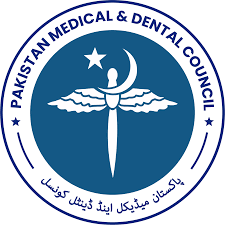Frequency And Associated Risk Factors of Dental Calculus Among Patients Aged Between 18 To 65 Years Reporting to Hayatabad Medical Complex and Khyber Teaching Hospital, Peshawar
DOI:
https://doi.org/10.52442/jrcd.v4i2.82Abstract
Aims: Health is a condition of all bodily, mental, and social wellness and not only the lack of disease or illness. Oral health represents more than first-class teeth; it is connected to general health and essential for wellness. Often most of the oral hygiene conditions are mistreated by the patients until there are any major symptoms like bad oral hygiene; one among them is dental calculus. Dental calculus characterizes the calcified microbial plaque and is covered by non-calcified viable microbial plaque if not removed plaque will change into calculus after around 2 weeks. It affects patients with deprived oral hygiene, but with a higher frequency in males and in older ages.
Material and Method: A hospital based descriptive cross-sectional study to determine the frequency and associated risk factors of dental calculus among patients aged between18 to 65 years reporting to Hayatabad medical complex and Khyber teaching hospital Peshawar, Pakistan. The duration of the study was from February 2019 to June 2019. Our data collection was through questionnaire and convenience sampling technique was applied.
Results: Among 361 patients, 295(81.72%) patients were affected with dental calculus, while the rest 66(18.28%) patients were not affected. Dental calculus was more common in males than females in our study. It was very common in old ages. There were 361 patients included in our study in which 90(24.93%) patients reported with subgingival calculus and 205(56.78%) patients were with supragingival calculus Associated risk factors were cigarette smoking, patients having no knowledge about tooth brushing method like horizontal and vertical tooth brushing, Not using interdental brushing as a secondary method for plaque control, tooth brush with hard bristles, dental visits which were not common in the society and bleeding gums while brushing found in our study.
Conclusion: More than half of the patients were affected with dental calculus. Dental calculus was more common in males than females in our study. Associated risk factors were cigarette smoking, patients having no knowledge about tooth brushing method like horizontal and vertical tooth brushing, not using interdental brushing as a secondary method for plaque control, toothbrush with hard bristles, dental visits which were not common in the society and bleeding gums while brushing found in our study.
Keywords: Dental calculus, plaque, Analytical cross-sectional study




